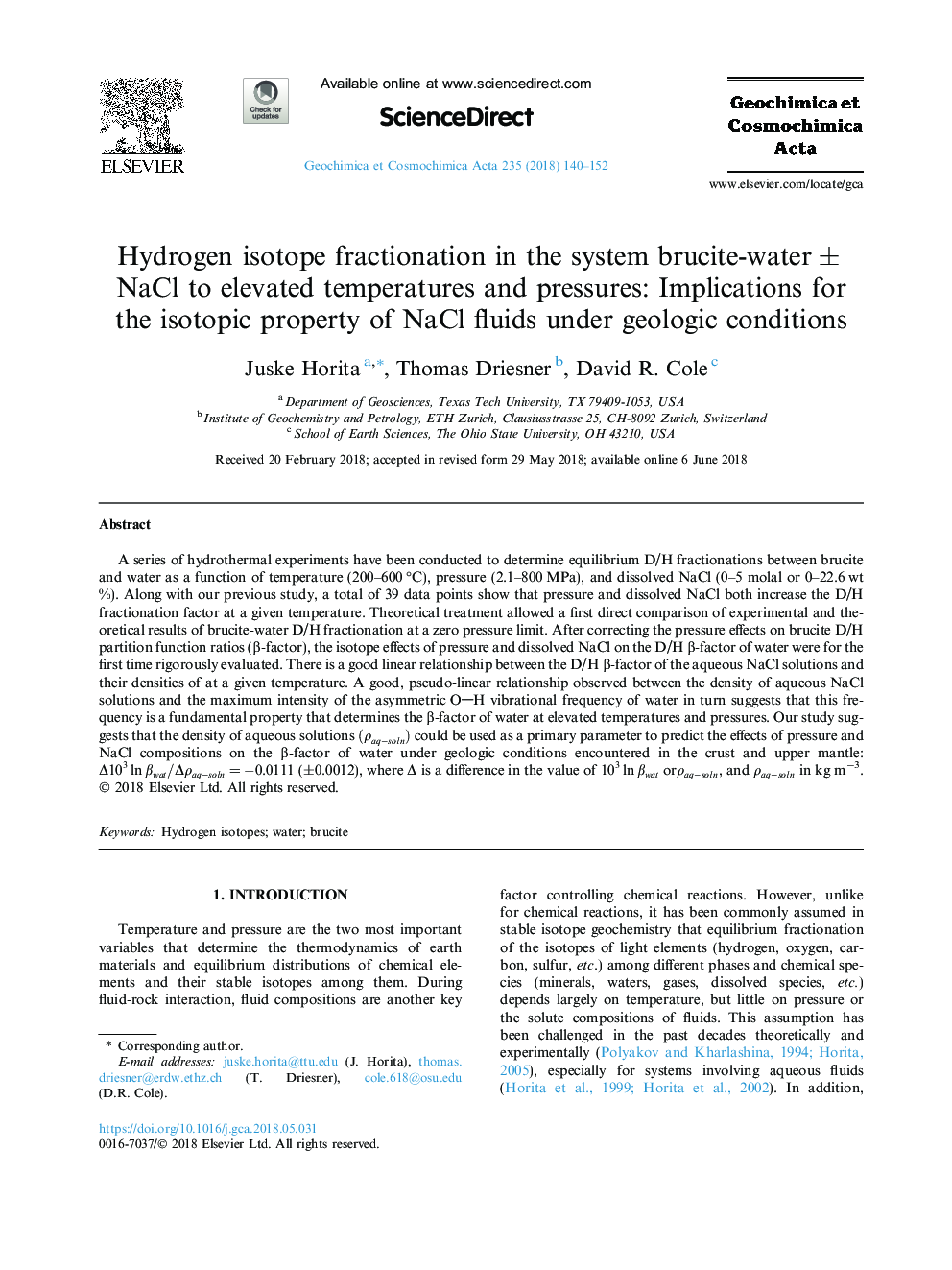| Article ID | Journal | Published Year | Pages | File Type |
|---|---|---|---|---|
| 8910676 | Geochimica et Cosmochimica Acta | 2018 | 13 Pages |
Abstract
A series of hydrothermal experiments have been conducted to determine equilibrium D/H fractionations between brucite and water as a function of temperature (200-600â¯Â°C), pressure (2.1-800â¯MPa), and dissolved NaCl (0-5 molal or 0-22.6â¯wt%). Along with our previous study, a total of 39 data points show that pressure and dissolved NaCl both increase the D/H fractionation factor at a given temperature. Theoretical treatment allowed a first direct comparison of experimental and theoretical results of brucite-water D/H fractionation at a zero pressure limit. After correcting the pressure effects on brucite D/H partition function ratios (β-factor), the isotope effects of pressure and dissolved NaCl on the D/H β-factor of water were for the first time rigorously evaluated. There is a good linear relationship between the D/H β-factor of the aqueous NaCl solutions and their densities of at a given temperature. A good, pseudo-linear relationship observed between the density of aqueous NaCl solutions and the maximum intensity of the asymmetric OH vibrational frequency of water in turn suggests that this frequency is a fundamental property that determines the β-factor of water at elevated temperatures and pressures. Our study suggests that the density of aqueous solutions (Ïaq-soln) could be used as a primary parameter to predict the effects of pressure and NaCl compositions on the β-factor of water under geologic conditions encountered in the crust and upper mantle: Î103lnβwat/ÎÏaq-solnâ¯=â¯â0.0111 (±0.0012), where Î is a difference in the value of 103lnβwat orÏaq-soln, and Ïaq-soln in kg mâ3.
Keywords
Related Topics
Physical Sciences and Engineering
Earth and Planetary Sciences
Geochemistry and Petrology
Authors
Juske Horita, Thomas Driesner, David R. Cole,
